Happy National Moth Week! Every year, during the last full week in July, we celebrate the diversity and life histories of the Lepidopteran underdogs – moths! National Moth Week is a worldwide endeavor to expand public awareness and knowledge about these crucial insects. So, in celebration, we’re taking a look at some of the local moths you can find around western Montana!
Submit your bug pictures to bugid@missoulabutterflyhouse.org (and remember to include your name, the date, and the location where you took the photo)!
Header photo: This minuscule Spotted Thyris Moth (Thyris maculata) is a tricky find; there are scattered records of this species in the western U.S., but even in the east – where they are significantly more abundant – their size (12-15 mm) can make them easy to miss. If you’re lucky, you may find groups of them forming “puddle parties.” They belong to the family Thyrididae, the window-winged moths, and are a poorly understood group as a whole. – Glenn Marangelo, July 10, 2025, Missoula, MT

Pacific Hornet Clearwing
Sesia pacificum
Delicious or dangerous? Many predators would pass on these day-flying moths…and many people would be wary in their presence. In flight they closely resemble wasps, even producing a droning sound to further the ruse. They have been observed across the western U.S. and Canada, and are most commonly found in July and early August. Larvae develop in the wood and bark of mature poplars and willows, overwintering twice in the larval stage before pupating in the spring of their third year. Adults live for only 4-10 days.
Lisa Cloo, July 22, 2025, Turah, MT

Sigmoid Prominent
Clostera albosigma
These elegant-looking moths can be found coast-to-coast in the United States and Canada, even as far north as the Northwest Territories, but tend to be rare in the southeastern U.S. Their scientific name comes from the Latin word “albus,” meaning “white,” and the Greek letter Sigma, which corresponds to the English letter “S,” and refers to the S-shaped white squiggle on the forewing. The caterpillars feed on poplar, willow, and aspen and construct large communal “tents” in their host trees.
Judy Halm, July 20, 2025, Helena, MT

Vashti Sphinx Moth
Sphinx vashti
The Vashti Sphinx Moth is also sometimes called the Snowberry Sphinx Month because its larvae – like this caterpillar – feed primarily on Snowberry (Symphoricarpos spp.) plants. Not to be confused with the Snowberry Clearwing Moth, adults of this species are brownish grey with black and white banding on the hindwing. Found in mountain woodlands and prairie streamcourses across much of western North America, adults fly from May through July and feed on nectar from honeysuckle (Lonicera) and columbine (Aquilegia).
Raelynn Roadhouse, July 9, 2025, Missoula, MT

Police Car Moth
Gnophaela vermiculata
When visitors ask us how to differentiate moths from butterflies, we tell them that one of the general rules is “butterflies fly during the day, moths fly at night.” The police car moth is just one exception to this rule. This unique-looking (and uniquely named) moth ranges throughout the Rocky Mountain region of North America, as far north as British Columbia and south to New Mexico. They occupy mid-elevation habitats like mountain foothills and nectar from herbaceous flowers like thistle (Cirsium) and goldenrod (Solidago). Adults are on the wing briefly in late summer, typically July through August; larvae hatch in the fall and overwinter in the ground.
Kelly Dix, July 17, 2025, Moore Lake, St. Regis, MT
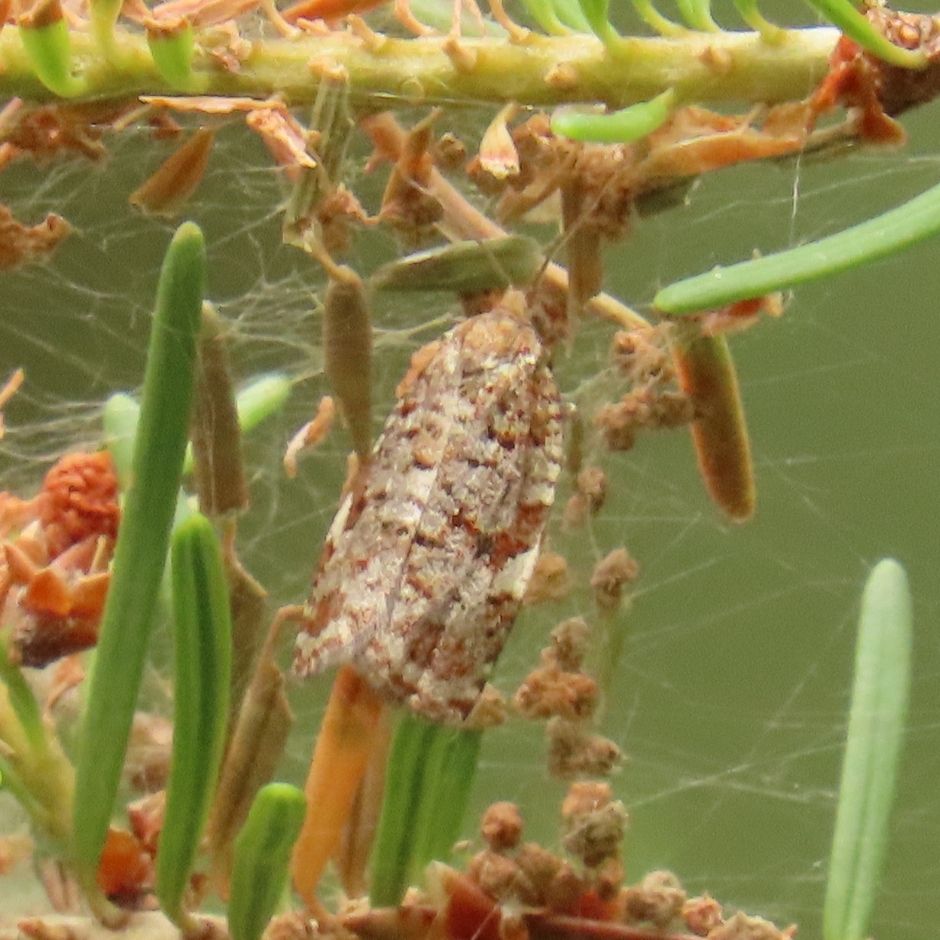
Western Spruce Budworm
Choristoneura sp.
There are a number of closely-related species in the Western Spruce Budworm complex, many of which are not readily distinguishable from one another. Regardless of this taxonomic ambiguity, one thing is clear about these tiny moths: they are one of the most destructive native pests of western forests. Larvae feed on the buds and new shoots of a variety of conifer tree species, and can also feed on flowers and cones, resulting not only in defoliation, but also reduced seed production. Severe outbreaks can last for years or even decades, and often end only when the food supply has been exhausted.
Connie Geiger, July 21, 2025, Helena, MT
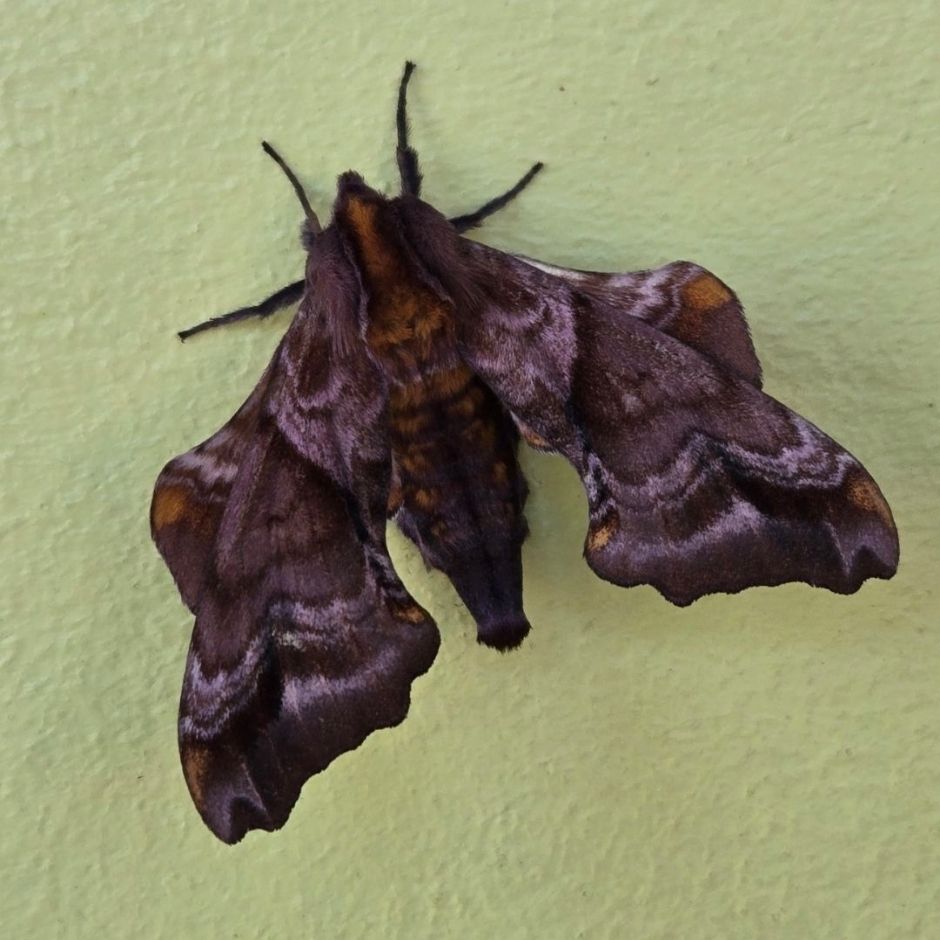
Small-eyed Sphinx Moth
Paonias myops
This moth has average, moth-sized eyes, unlike their name suggests, but the eyespots on the hindwings (not visible in this photo) are small compared to the eyespots of similar species. These handsome moths are found throughout the U.S., southern Canada, and northern Mexico. Caterpillars are voracious eaters of wild cherry, hawthorn, and other trees, but like many species of moths, after emerging from the cocoon, the adults lack functioning mouthparts and do not feed. The adult lifespans are relatively short, as they are entirely reliant on fat reserves they built up as caterpillars.
Angie Monaco, July 18, 2025, Missoula, MT
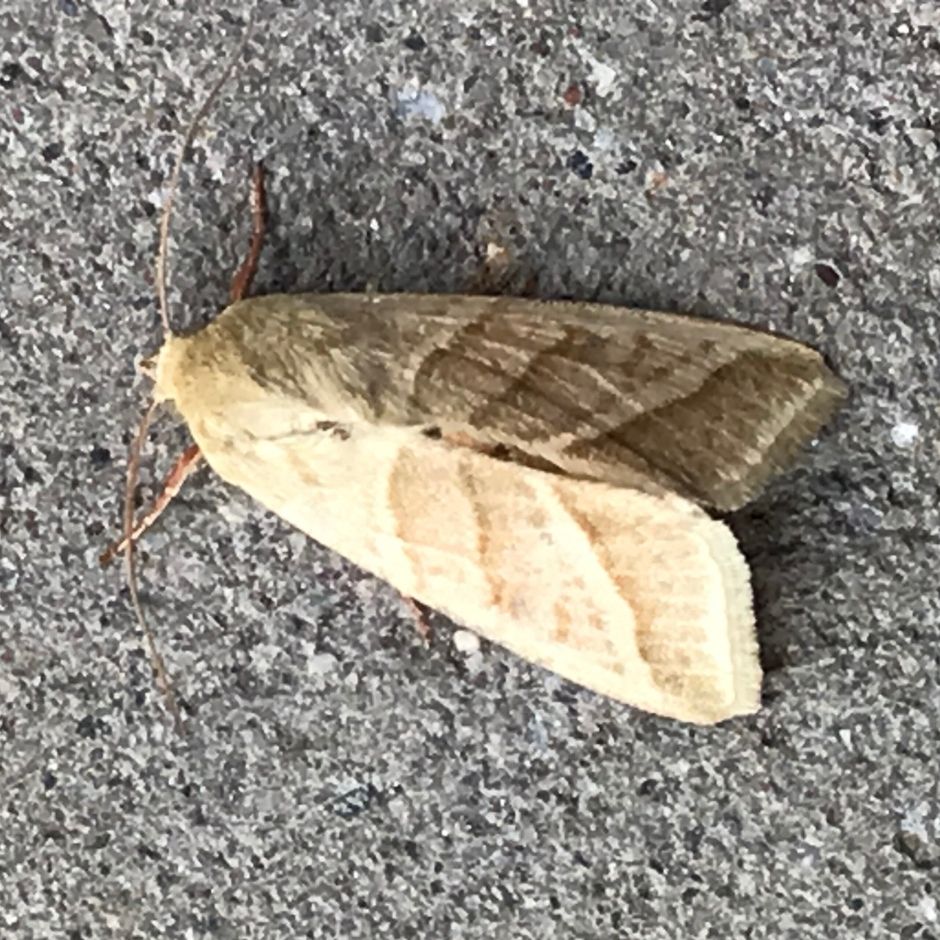
Tobacco Budworm Moth
Chloridea virescens
Widespread throughout South and Central America and the southern U.S., this species disperses northward as far as southern Canada. It has also been introduced in the Pacific Northwest via larvae inadvertently imported on cultivated nursery plants. Larvae feed on a variety of host plants, and it is considered a major agricultural pest, particularly for cotton and tobacco (hence its common name).
Roberta Cauthron, July 19, 2025, Missoula, MT
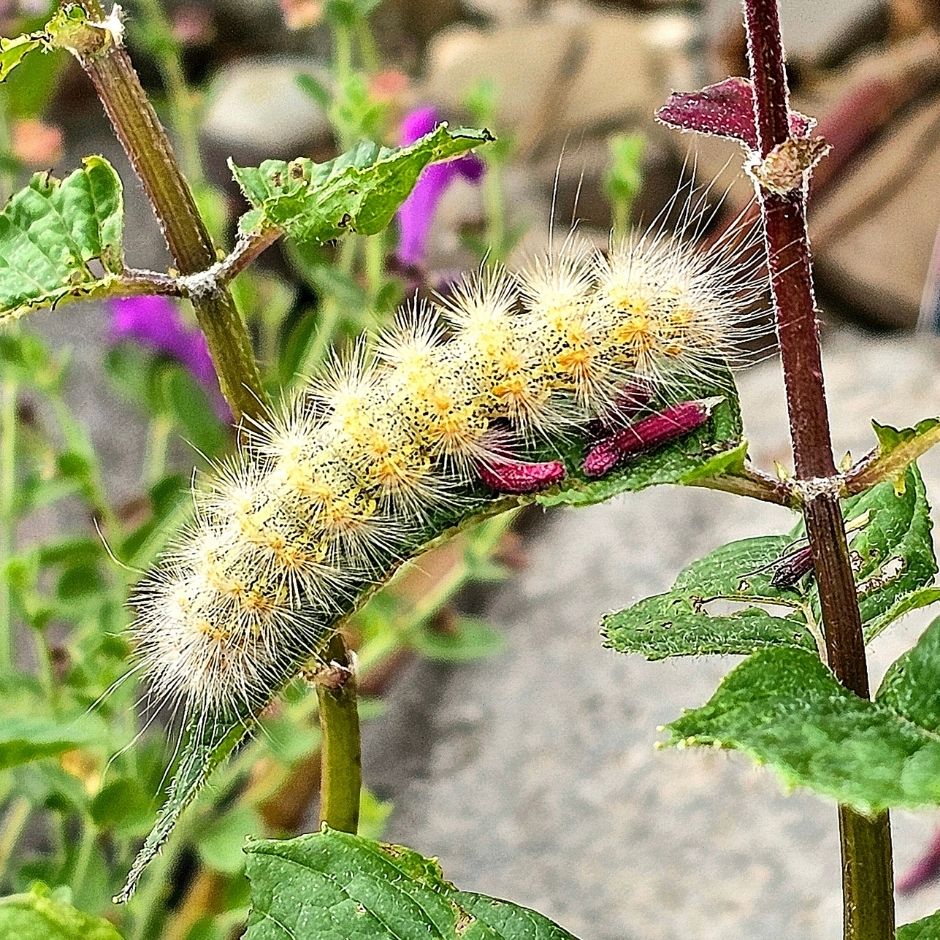
Salt Marsh Moth
Estigmene acrea
The Salt Marsh caterpillar varies widely in color, from blond to brown to black, making identification difficult (like most caterpillar ID). However, if you can get a look at their face, they have black markings that give them away. The common name reflects their affinity for tidal marshes along the Pacific, Atlantic, and Gulf coasts. Still, they are found in any open habitat throughout North America, except for Alaska and the Yukon. Part of the tiger moth family and related to the more familiar Woolly Bear, the caterpillars feed on a wide variety of plants and are often seen rapidly wandering around on the ground in search of new food sources.
Deb Hoagland, July 21, 2025, Missoula, MT
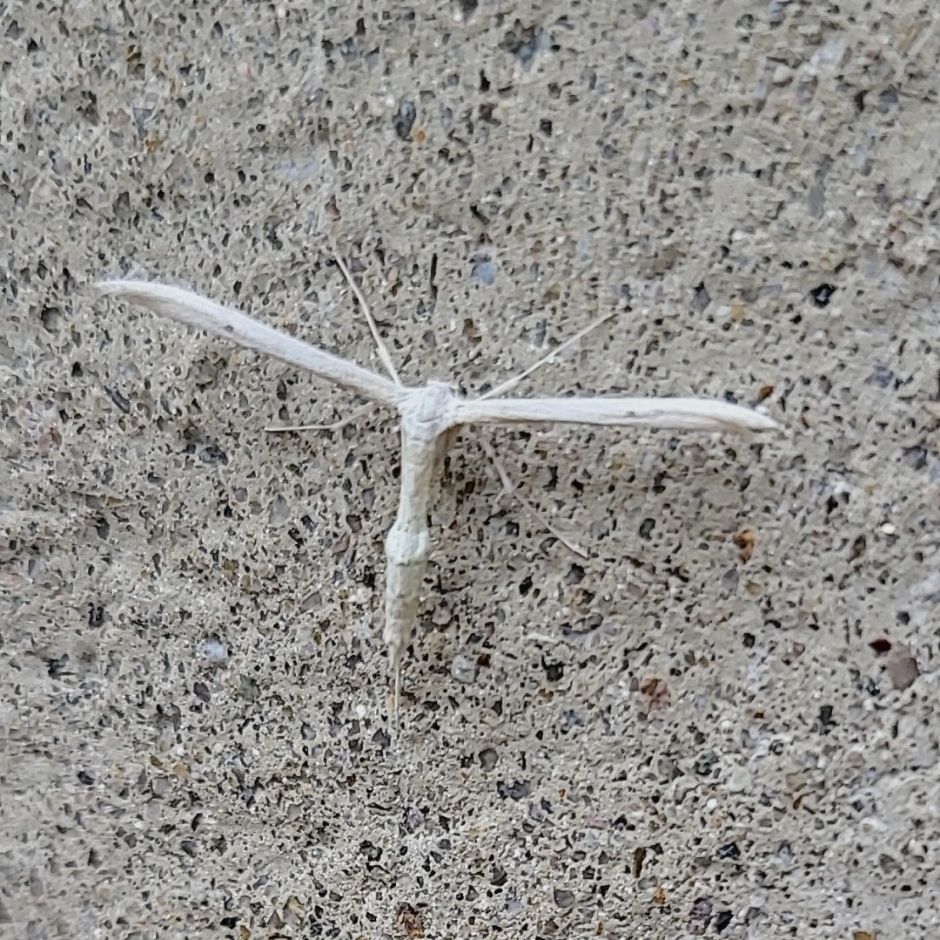
Plume Moth
Hellinsia sp.
Plume moths are members of the micromoth group and have unusually modified wings. At rest, they look like a capital “T” or a miniature glider. They resemble a piece of dried grass, which helps them go unnoticed by potential predators. Caterpillars are hairy or bristly, various colors, and feed on plants, with some species rolling leaves to feed inside and others boring into stems. There are over 58 species of plume moths in the Hellinsia genus alone in the U.S. and Canada, making identification to exact species very difficult.
Connie Geiger, July 21, 2025, Helena, MT

Leafy Spurge Hawkmoth
Hyles euphorbiae
A couple of weeks ago, we shared a photo of a Leafy Spurge Hawkmoth caterpillar; this is what the adult form looks like. A non-native species released to combat the noxious weed leafy spurge, these moths have inhabited the United States since 1965. The caterpillars are striking, with colors ranging from vivid green and yellow to dark red, orange, and grey, depending on the caterpillar’s age. As adult moths, their wingspan can reach close to 10 cm, and like many day-flying moths, they are often mistaken for hummingbirds.
Jennifer Wells, July 20, 2025, Thompson Falls, MT